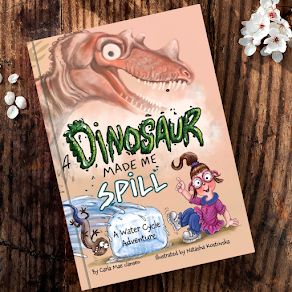Today I am sharing the second day in our online Preschool Botany Class and a fun science experiment! You can see the first day (where we learned about the parts of plants and started growing the perfect plant for preschoolers) here. Read on to learn all about this science project perfect for kids.
This online botany class is totally free! You can join in as we go, or wait until all the lessons are up and choose your favorites! They would work great for a spring/summer weekly camp, a week-long preschool unit, or just as a fun way to introduce your kiddos into the exciting world of plants! The lessons can be done inside or outdoors! The lessons are all targeted to a preschool (2-6 year old) audience, but can easily be adapted for elementary students too. I actually have a 2nd grader doing the lessons with us, and I will include a few notes for older kids.
So, let's get started!
Topics & Skills Covered in Day 2:
* Plants need water
* Function of roots and stem
* Colors
* Color Mixing
* Fine Motor Skills
* Prediction
* Measuring
Supplies for Day 2:
* White flowers (carnations work wonderfully)
* Hand clippers
* Food coloring
* Plastic Cups or Mason Jars
* Ruler
* Straws and cups with drinking water
Preschool Botany Class:Day 1 Lesson:
1. Spread the white flowers out on a table. Ask your kiddos where the stem is and what they think it does. Snip a piece of stem and ask them what they see inside. Explain that there are several different tunnels inside a flower stem. Ask what they think the tunnels are for. Different tunnels transport (or more) different things for the flowers. Xylem moves water and dissolved minerals, usually from the roots to the leaves. Phloem moves sugar (or plant food!), usually from the leaves to the rest of the plant.
Optional: Let your kiddos suck water up a straw to mimic water moving up xylem in a flower. Tell them that even tall trees use xylem to move water, though they have lots of "straws" bundled together!
Look at the ends of the flowers that have not been in water. Compare them to the freshly cut end. Ask your kiddos what they think happened. (The plant seals off the exposed tissue so it doesn't lose water and food.) This is why you cut the ends of flowers right before you put them in water--it's easier for the plant to soak up water through stems that are open, not sealed up! Ask your children what they think would happen if the flower were to soak up colored water. This is today's experiment!
2. Let your children pour about 10 drops of food coloring into each cup of water. Be sure to use some combinations so you can talk about colors mixing (like yellow and blue to make green, red and blue to make purple, etc.).
3. Snip each flower's stem and place it in a cup. Predict how long it will take before you see colors in the flowers. Put the flowers in a safe location. (We might have lost a cup at one point to a very inquisitive 2-year old!) I'll show you how long ours took below.
4. You may want to provide some extra paper for finger painting...just beware that food coloring stains! You can also let your kiddos "paint" with the stems.
5. Measure the growth of the onion plant you started growing in the first lesson. Did it surprise your children or was it what they expected?
6. Sing and act out The Stem song to review! If you're really lucky, I'll try to make a video too, but for right now, you just get words! :D
The Stem (Tune: Row, Row, Row Your Boat)
by Carla at Preschool Powol Packets
Grow, grow, grow your stem
Up into the sky;
It will carry water from
The roots to flowers high!
That's it! Answer any questions and let your kiddos play!
AND...here are the results from our flower experiment:
after 4 hours the freshest flowers were starting to show a little color:
after 12 hours most of the flowers that were going to change colors had already changed significantly (this was a lot sooner than my kiddos expected!):
After 24 hours, there were no more big changes...they looked essentially the same at 24 hours as at 72 or more:
This was one of my favorites...everyone had different theories about why only half of the petals colored...even after several days (I suspect the xylem tissue was damaged on half the stem):
There were two flowers that stayed white the entire time...we decided they were simply not as fresh as the others and did not "drink up" as much water.
Did you try this lesson and its science experiment? I'd love to see pictures! You're welcome to share photos of how the science project went as a comment here or on our PreschoolPowolPackets Facebook page! Be sure to join us for our next preschool botany lesson too!!
Amazon Affiliate Links:


I may share at any of these parties!
 Never miss another post again! Sign up for our weekly updates newsletter and get links to all our posts once a week in your inbox! Sign up here!!
Never miss another post again! Sign up for our weekly updates newsletter and get links to all our posts once a week in your inbox! Sign up here!!
%2Blabel%2Bday%2B2.jpg)
.jpg)
.jpg)
.jpg)
.jpg)
.jpg)
.jpg)
.jpg)
.jpg)
.jpg)
.jpg)
.jpg)
.jpg)
.jpg)
.jpg)

















0 comments:
Post a Comment